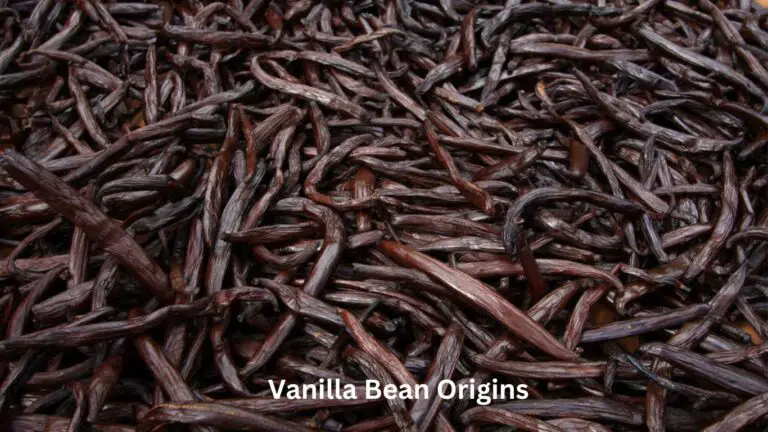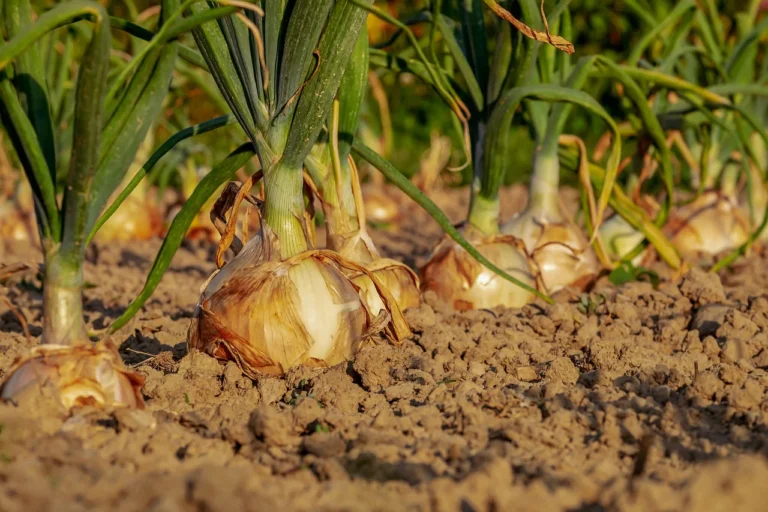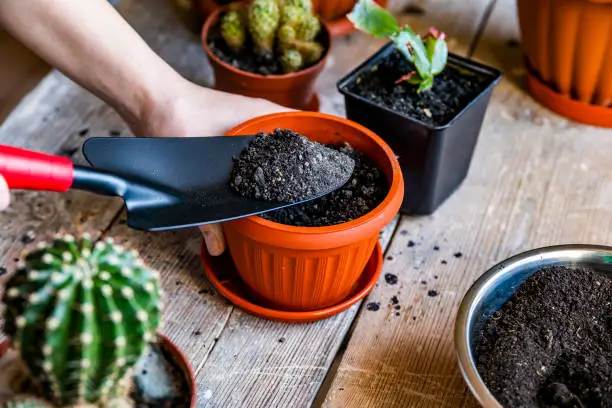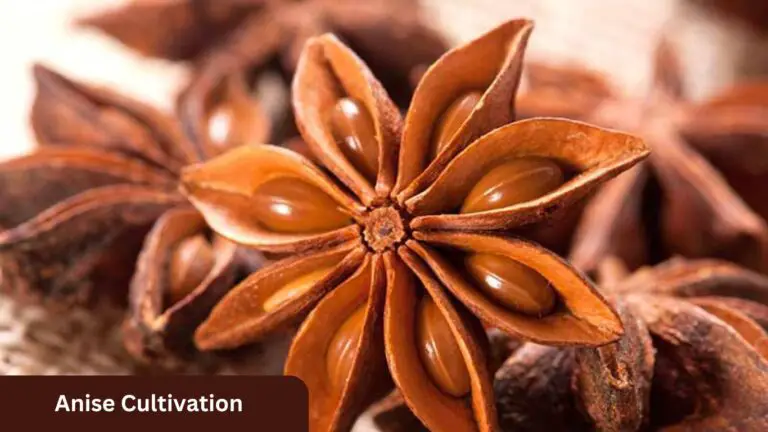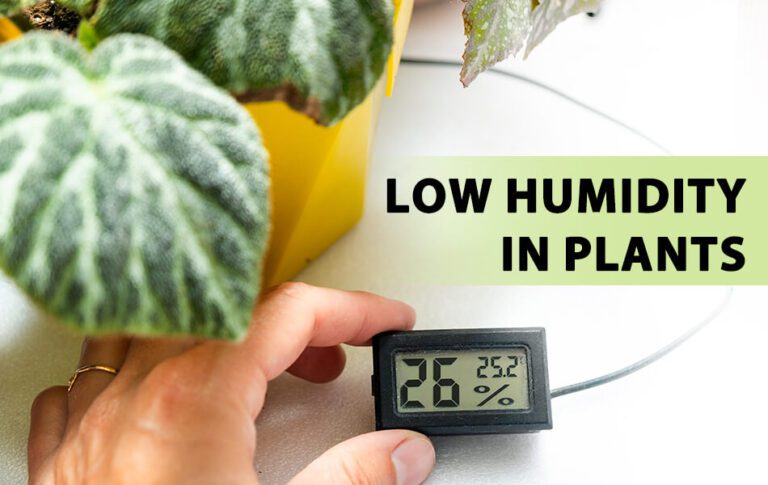Plum Tree Varieties: 23 Different Types of Plum Trees
Table of Contents
Understanding Plum Tree Diversity: Exploring the Many Varieties
Plum trees are a delightful addition to any garden or orchard, with their stunning blossoms and flavorful fruits. And with a diverse range of plum tree varieties available, there is something to suit every taste and preference. Let’s explore the many varieties of plum trees and their unique characteristics.
One popular variety is the Santa Rosa plum, known for its vibrant, deep red skin and sweet, juicy flesh. This cultivar is a favorite among both home gardeners and commercial growers, as it produces abundant crops and is self-pollinating. Its versatility makes it suitable for eating fresh, canning, or making delicious jams and jellies.
Another noteworthy variety is the Methley plum, which boasts a medium-sized, burgundy-colored fruit with a juicy, slightly tart flavor. This early-ripening cultivar is ideal for regions with shorter growing seasons and is a great choice for those looking to enjoy plums earlier in the year. Its compact size makes it suitable for smaller gardens or container planting.
From the golden-skinned Satsuma plum to the dark and tangy Damson plum, each variety brings its own unique taste profile and characteristics to the table. Whether you prefer sweet or tart, large or small, there is a plum tree variety out there to cater to your preferences.
Stay tuned for more exploration into the characteristics of popular plum tree cultivars as we delve deeper into the world of plum tree diversity.

Exploring the Characteristics of Popular Plum Tree Cultivars
When it comes to plum trees, there are numerous popular cultivars known for their unique characteristics. One such variety is the Santa Rosa plum. This cultivar is highly prized for its sweet and tangy flavor, making it a favorite for fresh eating and culinary purposes. The Santa Rosa plum tree is also known for its beautiful, deep purple skin and amber-colored flesh. With its firm texture and juiciness, this cultivar is perfect for making jams, jellies, and preserves.
Another popular plum tree cultivar is the Methley plum. This variety is known for its early ripening, making it a great choice for those eager to enjoy fresh plums in the early summer. The Methley plum tree produces medium-sized, red-skinned fruits with incredibly sweet and aromatic flesh. Its high sugar content and soft texture make it ideal for eating fresh or using in desserts such as pies and cobblers. In addition to its delicious flavor, the Methley plum tree is also valued for its ornamental appeal, as it displays stunning pink blossoms in the spring.
Characteristics of some popular plum tree cultivars. Plum trees come in various types, each with unique features. Here are some well-known varieties
| Plum Tree Variety | Description |
|---|---|
| Japanese Plums | – Ideal for dry and mild climates (zones 5-9). |
| – Early spring blossoms. | |
| – Rounded fruit, approximately 2 inches in diameter. | |
| – Skin colors range from yellows and reds to blues, purples, and almost black. | |
| – Many Japanese varieties require cross-pollination with different cultivars. | |
| – Notable varieties: Black Amber (upright dwarf), Santa Rosa (self-pollinating), Shiro (white plum). | |
| European Plums | – Often called prunes. |
| – Dark blue skin with yellow flesh that doesn’t cling to the seed. | |
| American Plums | – Hybrids of native North American and Japanese species. |
| – Thrive in various climates globally. | |
| – Notable variety: American Plum Tree (also known as bush plums). |
Plum trees not only bear delicious fruit but also add beauty to your landscape with their foliage and spring flowers.
A Guide to Ornamental Plum Trees: Adding Beauty to Your Landscape
Ornamental plum trees are a beautiful addition to any landscape, adding a touch of elegance and color. These trees are known for their stunning blooms, which range in hues from soft pinks to deep purples. In addition to their captivating flowers, ornamental plum trees also offer unique foliage that varies in color and shape.
One popular variety of ornamental plum tree is the Prunus cerasifera ‘Thundercloud,’ which is renowned for its deep purple leaves. This eye-catching foliage provides a striking contrast against the greenery of other plants in the garden. Another noteworthy choice is the Prunus novita, which features a rounded growth habit and glossy green leaves that turn a vibrant red in the fall.
Not only do ornamental plum trees offer a visual feast, but they also provide a sweet fragrance during bloom time, attracting bees and butterflies to your garden. These trees are relatively low-maintenance, requiring minimal pruning and upkeep. With their beautiful blossoms and ornamental foliage, adding an ornamental plum tree to your landscape is sure to enhance its beauty and create a tranquil and inviting atmosphere.

The Best Plum Trees for Home Orchards: A Comprehensive Selection Guide
When it comes to establishing a productive home orchard, selecting the best plum trees is crucial. With a wide variety of options available, it is important to choose those that are well-suited to your specific needs and growing conditions. One popular choice for home orchards is the Santa Rosa plum tree. Known for its vibrant red skin, this variety produces deliciously sweet and juicy fruit. The Santa Rosa plum tree is also highly adaptable, thriving in a range of climates and soil types. Another excellent choice is the Methley plum tree, which is prized for its early fruiting season and resistance to common diseases. Its medium-sized, purple-red fruits have a luscious and tangy flavor, making this variety a favorite among plum enthusiasts.
In addition to these popular choices, there are other plum tree cultivars that offer unique qualities for home orchards. The Satsuma plum tree, for example, is known for its exceptional cold hardiness, making it a suitable option for regions with harsh winters. Its golden-red fruits are firm and sweet, making them perfect for fresh eating, canning, and preserving. For those seeking larger plums, the Beauty plum tree is an excellent selection. With its rich flavor and deep purple skin, this variety is ideal for snacks, desserts, and jams. These are just a few examples of the many plum tree cultivars available, each with its own distinct characteristics that can enhance the beauty and productivity of your home orchard.
Unveiling the Unique Traits of Japanese Plum Trees
Japanese plum trees (Prunus salicina) are renowned for their unique traits that set them apart from other plum tree varieties. These trees are highly valued for their superior fruit quality, vibrant colors, and distinct flavors. One of the notable characteristics of Japanese plum trees is their remarkable ability to produce an abundance of large-sized fruits. These plums typically have a round or heart-shaped appearance with a smooth, firm skin that comes in a range of colors including red, purple, yellow, and green. The juicy flesh of Japanese plums is delightfully sweet and succulent, making them a favorite among fruit lovers.
In addition to their exceptional fruit, Japanese plum trees also showcase a stunning display of blossoms in the springtime. The trees burst into a profusion of vibrant flowers, with clusters of fragrant blossoms that range in color from pure white to pale pink. This stunning floral spectacle not only adds a touch of beauty to the landscape but also attracts pollinators such as bees and butterflies, ensuring healthy fruit set. Moreover, Japanese plum trees often exhibit a high level of ornamental value with their attractive foliage, which varies in shades of green and purple, creating an eye-catching contrast against the backdrop of the garden.
Overall, Japanese plum trees offer a delightful combination of beauty and taste. Their bountiful harvests, vibrant flowers, and visually appealing attributes make them an excellent choice for home gardeners seeking to enhance their landscapes and enjoy a delectable fruit crop. Whether you are a seasoned gardener or a novice enthusiast, the unique traits of Japanese plum trees are sure to captivate your senses and bring joy to your gardening endeavors.
- Appearance:
- Japanese plum trees are deciduous, growing from 15 to 20 feet high.
- They boast a broad canopy, providing ample shade.
- The finely serrated, oblong foliage creates a lush green backdrop for their flowers.
- Blossoms:
- In spring, Japanese plum trees produce pale pink to white blossoms before the foliage emerges.
- These blossoms create an eye-catching display and add aesthetic beauty to your landscape.
- Fruit:
- Japanese plum fruit varies in color, ranging from deep purple to yellow.
- The plums have a sweet, juicy, and slightly tart flavor.
- Popular varieties include:
- ‘Santa Rosa’: Known for its aromatic, rich fruit.
- ‘Satsuma’: Features deep red, sweet plums.
- Benefits:
- Growing Japanese plum trees offers several advantages:
- Nutritious Fruit: Plums are rich in antioxidants, minerals, and vitamins. Enjoy them fresh or use them in desserts and jams.
- Ornamental Beauty: Plum trees enhance your landscape with stunning flowers and fruit.
- Resilience: They can grow in various soil types and climates.
- Pollinator Attraction: These trees support local insect populations, contributing to a healthy ecosystem.
- Growing Japanese plum trees offers several advantages:
- Planting Times:
- The best time to plant Japanese plum trees varies by region. In the Northeast, it’s recommended to plant them in late April to early May
Japanese plum trees not only yield delicious fruit but also add natural beauty to your surroundings. Choose the right variety based on your climate and enjoy the bounty they offer
European Plum Trees: A Taste of Old-World Flavors in Your Backyard
European Plum Trees: A Taste of Old-World Flavors in Your Backyard
European plum trees, also known as Prunus domestica, are a delightful addition to any backyard orchard. With their rich history and exquisite flavors, these trees offer a taste of the old world right in your own backyard. European plum trees are believed to have originated in Eastern Europe, with evidence of cultivation dating back to ancient Rome.
One of the most appealing aspects of European plum trees is the wide variety of flavors they offer. From sweet and juicy to tangy and tart, these plums come in a range of tastes that will satisfy any palate. Some popular cultivars include ‘Damson’, known for its deep purple skin and tart flavor, and ‘Italian Prune’, which is prized for its rich sweetness when dried. Whether you prefer to enjoy them fresh, use them in jams and jellies, or even dry them for a special treat, European plum trees offer a versatile and flavorful addition to your backyard orchard.
Note: This is just a short section of the article. The complete article will be longer and will provide more comprehensive information about European plum trees, including their nutritional value, growing requirements, pruning techniques, and pest management strategies, among other relevant aspects.

Exploring the World of Hybrid Plum Trees: Combining the Best of Both Worlds
Hybrid plum trees offer gardeners the opportunity to enjoy the best of both worlds – the desirable traits of different plum tree varieties combined into one unique plant. These hybrids are created through controlled cross-pollination, where the pollen of one plum tree is transferred to the stigma of another. The result is a tree that exhibits a combination of the parent trees’ characteristics, from fruit size and flavor to disease resistance and growth habit.
One popular example of a hybrid plum tree is the Pluot, which is a cross between a plum and an apricot. Pluots are well-known for their sweet and juicy flesh, which is a delightful blend of both fruits. These trees thrive in regions with warm summers and mild winters, making them an excellent choice for home orchards in Mediterranean climates. They come in a variety of flavors, ranging from the classic plum-like taste to more tropical and tangy notes.
Another notable hybrid is the 4-in-1 plum tree, which is a combination of four different plum varieties grafted onto a single rootstock. This ingenious approach allows gardeners to enjoy a diverse harvest from a single tree, with each variety ripening at a different time throughout the season. From early ripening plums to late-season favorites, this multi-grafted tree offers convenience and variety.
With their unique combination of traits, hybrid plum trees can be a fascinating addition to any garden or orchard. The possibilities for flavor profiles and harvesting times are endless, allowing gardeners to tailor their plum trees to their specific preferences and needs. Ultimately, exploring the world of hybrid plum trees opens up a world of exciting possibilities for both amateur and professional horticulturists alike.
The Role of Climate and Soil in Choosing the Right Plum Tree Variety
In order to successfully grow plum trees, it is crucial to choose the right variety that is well-suited to your climate and soil conditions. Different plum tree varieties have specific preferences when it comes to these factors, and understanding them will greatly increase your chances of a thriving orchard.
Climate plays a major role in determining the success of your plum trees. Plum trees generally prefer temperate climates, with a sufficient amount of winter chill hours to induce dormancy and promote fruit production. For example, European plum varieties thrive in cooler climates with distinct seasons, while Japanese plum varieties are more adaptable to warmer and milder climates. It is important to research and select plum tree varieties that are recommended for your specific hardiness zone, ensuring that the trees can withstand the low temperatures of your region’s winters and the heat of your summers.
Another factor that should not be overlooked is the soil composition in your orchard. Plum trees require well-drained soil that is fertile and rich in organic matter. Sandy loam or loamy soils are often ideal for plum tree cultivation as they provide proper drainage while retaining adequate moisture. Additionally, the pH level of your soil is important, with plum trees generally preferring slightly acidic to neutral soils ranging from pH 5.5 to 7.0. Conducting a soil test can help you determine if any amendments, such as lime or sulfur, are necessary to achieve the optimal pH for plum trees.
By carefully considering the climate and soil conditions of your area, you can select the appropriate plum tree variety that will thrive and produce abundant harvests. Ensuring that your trees are well-adapted to your specific environment will provide the best conditions for their growth and development, leading to a bountiful orchard for years to come.
The essential factors related to climate and soil when choosing the right plum tree variety for your orchard. Plum trees have specific requirements that impact their growth and fruit production. Here’s a concise table summarizing these aspects:
| Aspect | Considerations |
|---|---|
| Climate | – Plum trees thrive in a moderate climate, suitable for USDA zones 4 to 10. |
| – They require full sunlight, although they can tolerate partial shade. | |
| – Ensure your chosen variety is adapted to your local climate’s chill hours for fruit production. | |
| Soil Requirements | – Opt for well-draining, fertile soil with a pH near neutral (around 6.0 to 7.0). |
| – Loamy soil (a balanced mix of sand, silt, and clay) provides an ideal environment for plum trees. | |
| – Avoid waterlogged soil, as it can lead to diseases and poor growth. |
The right plum tree variety based on climate and soil conditions ensures successful growth and bountiful harvests
Disease Resistance and Pest Tolerance: Factors to Consider When Selecting Plum Trees
Disease resistance and pest tolerance are crucial factors to consider when choosing plum trees for your orchard. By selecting varieties that have a high resistance to common diseases and pests, you can ensure the health and productivity of your plum trees.
One important consideration is the susceptibility to fungal diseases such as brown rot and plum pox virus. Certain plum tree cultivars, such as the ‘Stanley’ and ‘Seneca’ varieties, have shown a high resistance to these diseases. By planting these resistant varieties, you can reduce the risk of your plants being affected and increase the chances of a successful harvest.
Another factor to consider is the tolerance to common plum pests, including aphids and plum curculio. These pests can cause significant damage to plum trees and their fruits. The ‘Santa Rosa’ and ‘Methley’ cultivars, for example, have demonstrated good resistance to plum curculio, making them a suitable choice for areas where this pest is prevalent.
By selecting plum tree varieties that exhibit disease resistance and pest tolerance, you can minimize the need for chemical treatments and ensure the long-term health and productivity of your orchard. It is essential to consult with local agricultural extension services or nurseries to identify the most suitable varieties for your specific region and climate.

From Blossoms to Fruits: A Seasonal Journey with Plum Trees
Plum trees are a captivating addition to any garden, offering not only beautiful blossoms but also a bountiful harvest of delicious fruits. The seasonal journey of a plum tree from blossoms to fruits is truly remarkable, showcasing the wonders of nature and the cycle of life.
In spring, the dormant plum tree awakens with a brilliant display of delicate blooms. The tree’s branches are adorned with clusters of small, fragrant flowers, transforming the landscape into a tapestry of vibrant colors. Bees and other pollinators eagerly visit these blossoms, transferring the pollen from one flower to another to facilitate fertilization.
As summer arrives, the plum tree undergoes a remarkable transformation. The fertilized flowers develop into tiny green fruits, dotted across the branches. With each passing day, these fruits grow larger and their green hue slowly transitions to various shades of purple, red, or yellow, depending on the variety. The tree works tirelessly, directing its energy towards the development of these plums, providing them with essential nutrients and water through its root system. Patient gardeners eagerly anticipate the day when the plums will be ripe and ready for picking.
The journey from blossoms to fruits with plum trees is a testament to the beauty and resilience of nature. It is a reminder of the intricate processes that take place to yield the delicious fruits we enjoy. As gardeners, we have the privilege of witnessing this magical transformation and savoring the rewards of a well-nurtured plum tree.
To understand it precisely a video is attached
What are the different parts of a plum tree?
A plum tree consists of several parts, including the trunk, branches, leaves, blossoms, and fruits.
How long does it take for a plum tree to bear fruit?
The time it takes for a plum tree to bear fruit can vary depending on the variety and growing conditions. Generally, it takes about two to five years for a plum tree to produce its first fruits.
Do all plum trees require cross-pollination?
No, not all plum trees require cross-pollination. Some plum tree varieties are self-pollinating, meaning they can produce fruits without the need for another plum tree nearby for pollination.
Can I grow plum trees in containers?
Yes, certain dwarf or compact varieties of plum trees can be successfully grown in containers. However, it’s important to choose a suitable container size and provide proper care for the tree to thrive.
How do I know when plums are ripe and ready for harvest?
The ripeness of plums can be determined by their color, firmness, and taste. Most plums are ready to be harvested when they have developed a deep, even color, feel slightly soft when gently squeezed, and have a sweet aroma.
What are some common pests and diseases that affect plum trees?
Plum trees can be susceptible to various pests and diseases, including plum curculio, aphids, brown rot, bacterial canker, and powdery mildew. Proper monitoring, regular pruning, and appropriate pest and disease control measures can help manage these issues.
Can I grow plum trees in colder climates?
Yes, there are plum tree varieties specifically bred for colder climates that can withstand freezing temperatures. It is important to choose a variety that is suitable for your specific climate zone.
How often should I water my plum tree?
The watering frequency for plum trees depends on factors such as weather conditions, soil moisture retention, and tree age. As a general guideline, young plum trees may require more frequent watering, while established trees typically need deep, infrequent watering.
Can I prune my plum tree in any season?
It is generally recommended to prune plum trees during late winter or early spring while they are dormant. Pruning during this time allows the tree to heal wounds more effectively and promotes healthy growth.
What are some popular culinary uses for plums?
Plums are versatile fruits that can be used in a variety of culinary creations. They can be enjoyed fresh, used in jams and jellies, added to salads, baked into pies and tarts, or even used to make plum wine or brandy.


